NEWSLETTER 04
April 2024: Handmade western shirts, our Bordeaux travel tips and a special modernist convent.
STYLE: WESTERN SHIRTS AND A PEAK INTO JAKE’S STUDIO
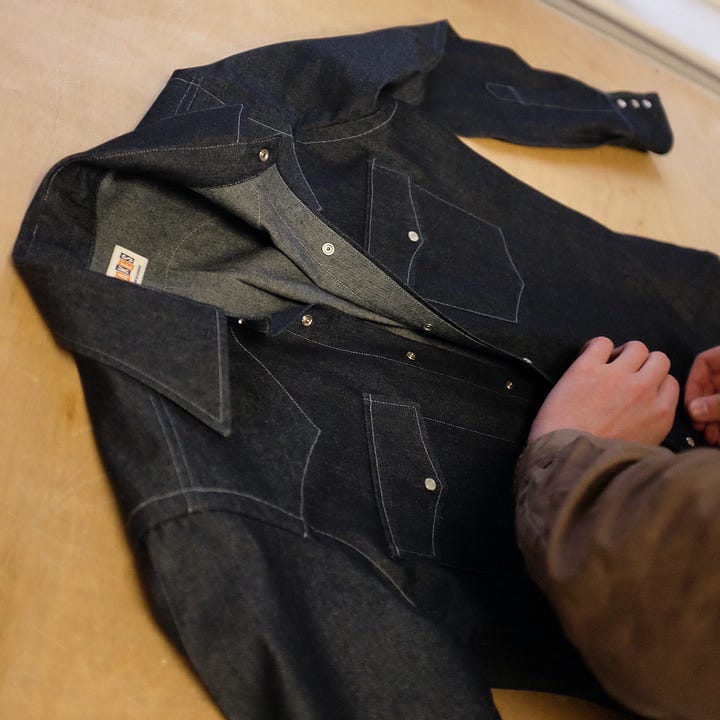
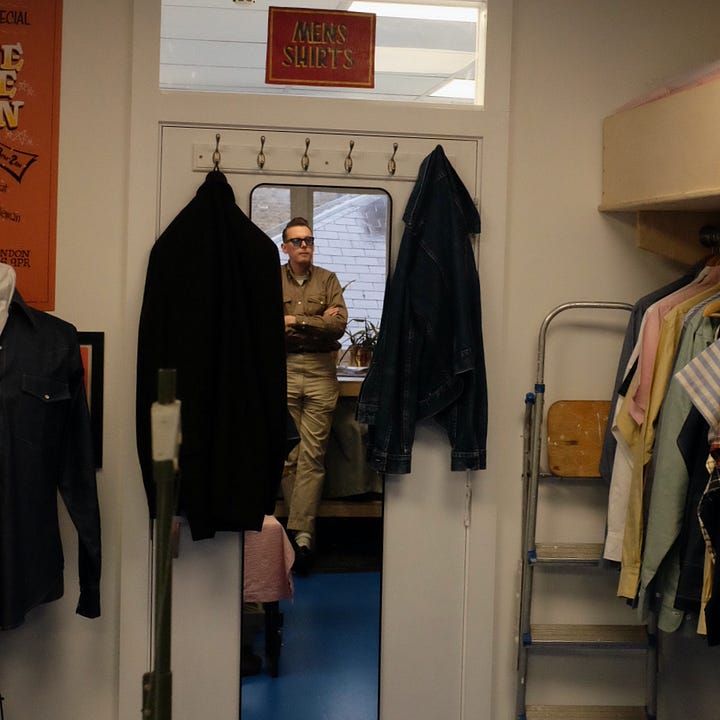
Western shirts hold a significant place in the pantheon of menswear. Typically made out of denim or chambray, they’re super versatile, sturdy, and can be worn dressed up or down. Like a reliable pair of jeans, they seamlessly transitioned from cowboy attire to our contemporary wardrobes.
I’d been searching for one for a while; yet, just like a good pair of jeans, a good western shirt is hard to come by. Of course you’d hardly be mistaken starting the search with a vintage Lee, Levi’s, Wrangler or Ralph Lauren. Among modern brands, this one by Hong Kong-London’s Bryceland’s is a personal favourite.
Yet another shirt maker that had my attention for a few years is Jake’s. Trained in tailoring in London, Jake Wigham established his brand in 2020 with a passion to make great quality garments using traditional skills and materials often lost in modern clothing.
I took the plunge and placed an order for one of his raw denim western shirts. Made to order, it was ready to collect after a few weeks and I took the opportunity to visit Jake in his Soho studio. The quality stands out, testament to the time invested and the beauty of the fabric itself. My favourite detail is the deep pleat at the back, which serves both function and aesthetics: it prevents fabric strain when moving the arms whilst looking great.
Taking the time to speak with Jake, I’ve come to appreciate the effort and dedication that go into making these garments. Something special remains about a handmade object; an appreciation for the craft of clothing that is all but lost in the world of fashion today. And who knows, I may catch myself placing another order for an Oxford button down soon.
KITCHEN: CASSATA
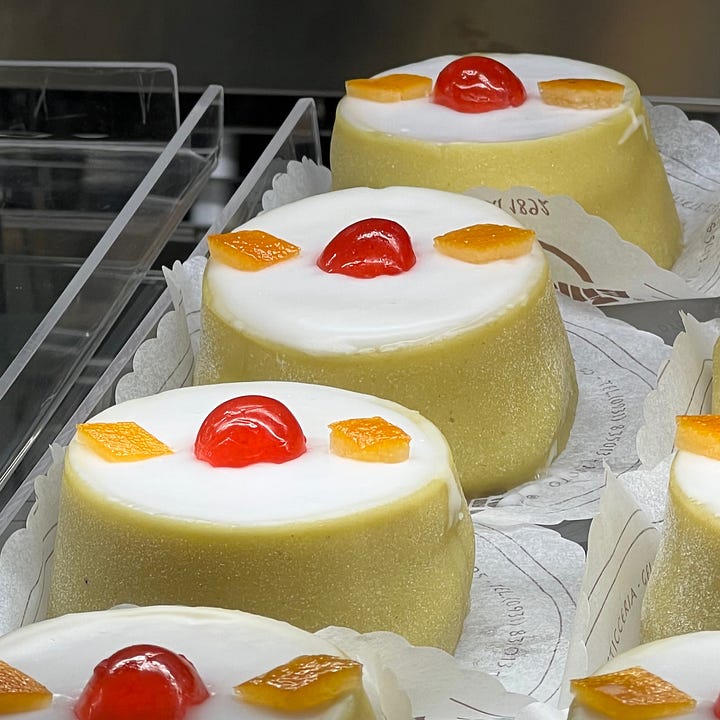
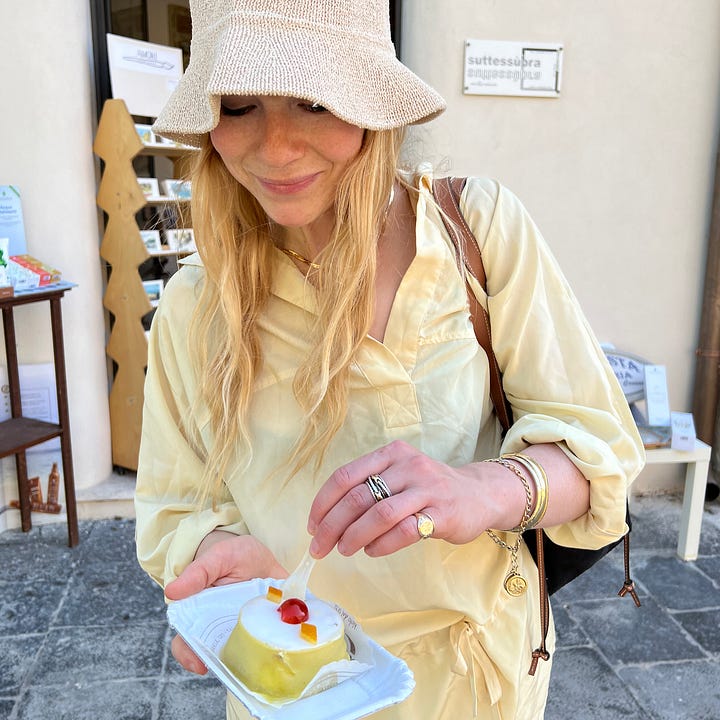
Anybody who has attempted to make a cassata can attest that it is not the simplest cake to try to throw together in under 6 hours, as we most recently attempted to do for a pre-Easter dinner party. For those unfamiliar with this traditional Sicilian cake, let’s recap: originally, cassata was a simple dish made with ricotta cheese, sugar, and sometimes candied fruits, all layered between sheets of sponge cake or sweetened bread.
Over time, it evolved into a more elaborate dessert featuring layers of sponge cake soaked in liqueur or fruit juice, ricotta cheese mixed with sugar and sometimes chocolate or candied fruit, all encased in marzipan or fondant icing. Its origins date back to Arab rule in Sicily during the 9th century, where it is believed to have been inspired by Middle Eastern sweets.
We are not actually going to give a recipe here, because in all honesty, we are still a little scarred from making it. BUT we will give you a place to go to try it - Caffè Sicilia. Sitting in the heart of Noto, Sicily, the unassuming 132-year-old café is a must-visit spot where Corrado Assenza, the fourth-generation co-owner, crafts delights like blood orange granita, cappuccino ghiacciato (iced coffee with almond milk granita), and cassata! So good that we went back twice in our brief few hours in the town.
If you aren’t planning a trip to the Sicilian town anytime soon, you can partake in the delight of a cassata prepared by someone else: Bar Italia in London’s Soho has slices on occasion. Send us any others you might know!
ART: LE CORBUSIER’S COUVENT DE LA TOURETTE
We don’t typically spend nights on holiday sleeping apart; but sometimes the pull of architecture (nerdism) takes precedent. This story is one of these.
Preparing for our trip to Lyon, France, earlier in the month, we came across the Couvent de la Tourette, a Dominican priory designed by Le Corbusier between 1953 and 1960. The building exemplifies his principles of modern architecture and, as it turns out, is a pilgrimage destination for architecture enthusiasts the world over (90% of our dinner table were architects or students of architecture).
Upon reaching the convent nestled atop the hill, its imposing scale captivates. Geometric shapes and raw concrete evoke austerity, yet spacious courtyards and large windows invite tranquility and light; and the signature vibrant pops of primary colour add brightness. Despite its modernist design, it harmoniously blends with the surrounding landscape, offering panoramic views that highlight the connection between architecture and environment.
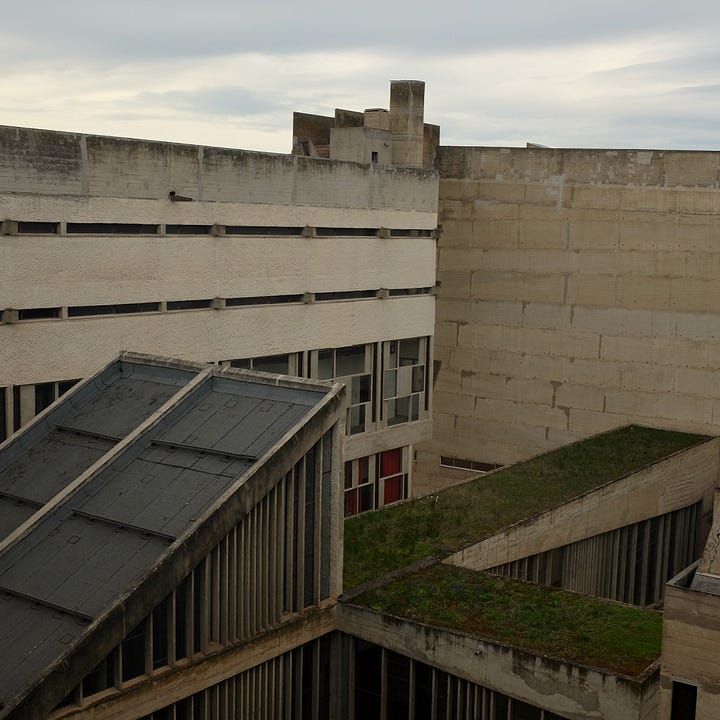
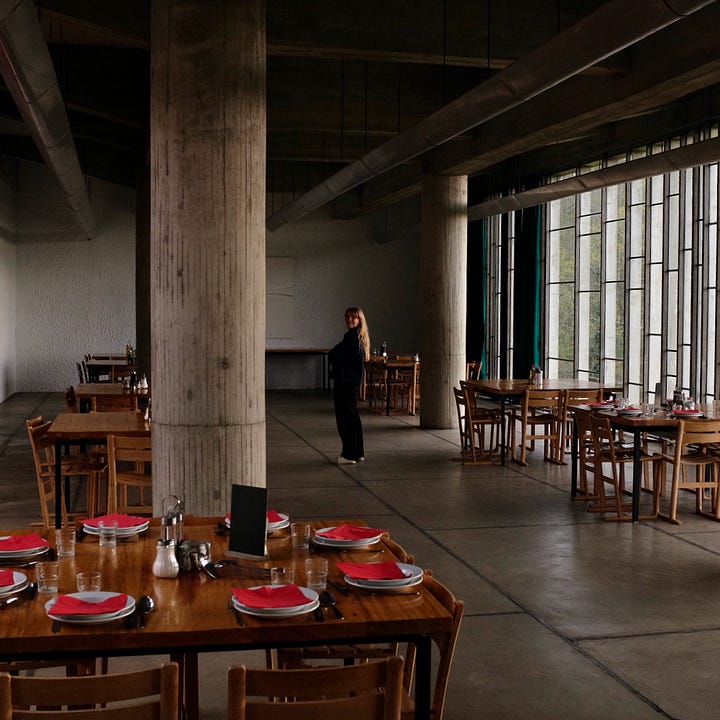
It is still an operating convent - originally designed to welcome over 100 brothers, just about a dozen are there today. The extra space means it is possible to stay overnight in the living quarters for the friars (which we did), attend mass, and eat your meals with the brothers. In your individual cell (hence the separation), you’ll find a compact yet functional space built around Corbusier’s philosophy for residential design. Introspection and spiritual reflection are the guiding design principles here, so don’t be taken aback by the spartan amenities. Instead, take the experience for what it is: the ability to live, for a moment, in a piece of architectural history.
TRAVEL: BORDEAUX
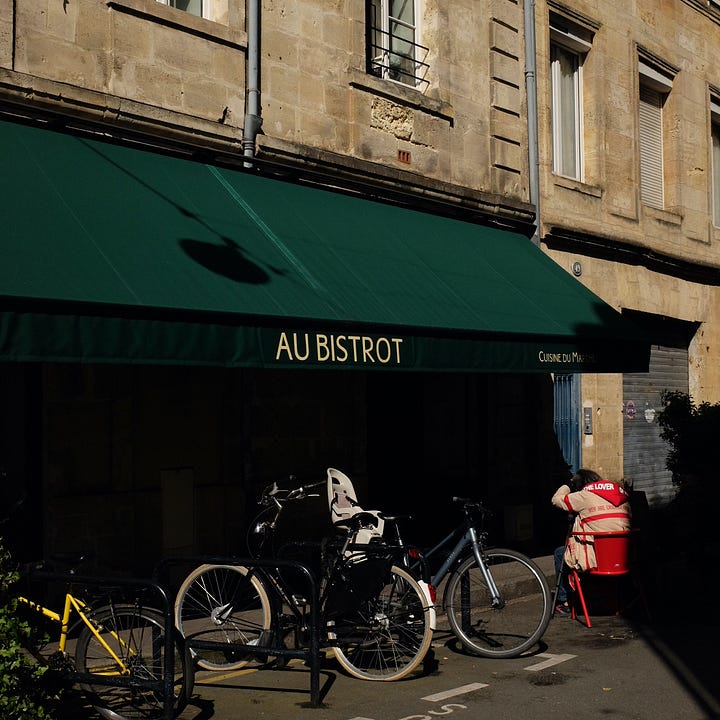
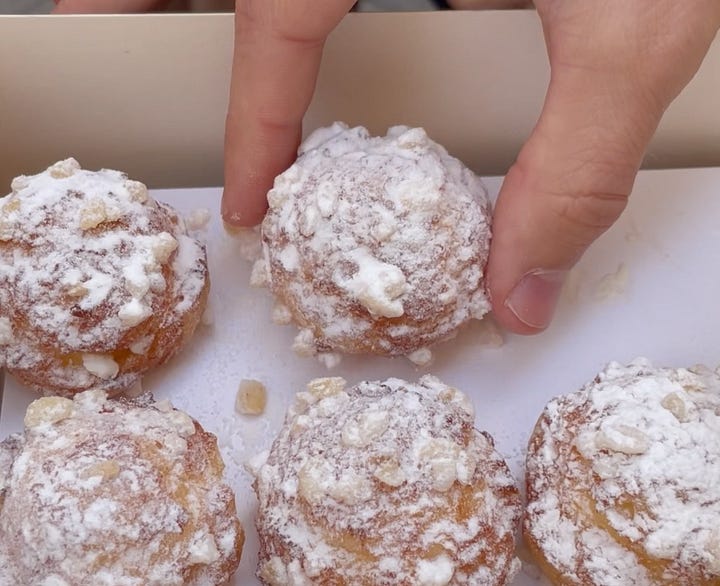
Our Easter trip to the Nouvelle-Aquitaine region in South-West France included a day out from our rented home in the Bassin d’Arcachon to the city of Bordeaux. We loved the grandiose of the city - the big boulevards, 18th century buildings, and without a doubt, the wine. We absolutely won’t pretend we are giving a comprehensive list, but here is a very quick 12-hour guide to Bordeaux:
Eat & Drink
Pâtisserie: Dunes Blanches - Little clouds of choux pastry filled with the most delicious cream. Our friend Ed recommended this place and asked us to bring some home to London for him, unfortunately dairy products are not particularly travel-friendly. We ate a dozen in his honour.
Coffee: L’Achimiste - Conveniently located around the corner from Dunes Blanches for coffee to cut the post-pastry sugar rush.
Bistrot: Au Bistrot - Everything you want a French bistro to be: healthy portions of French classics made in big Le Creuset pots resting around the kitchen, delicious bread to mop up your plate with, and an extensive wine list that balances natural wines with classics.
Restaurant: La Tupina - A more formal restaurant, we were recommended the roast chicken.
Vin: Soif - Wine bar!
Cocktail: Motto - Cocktail bar!
Do
Antiquing: There are several antique stores along Rue Notre Dame, including L’Ours Blanc, where we bought a new set of cane dining room chairs (and are still trying to figure out how to get back to London…)
Architecture: Cité Frugès - A housing complex in the suburbs of Bordeaux (Pessac) designed by Le Corbusier for industrial Pierre Jeanneret. It served as a testing ground for the ideas of his 1922 manifesto "Vers une Architecture". We’d say this is more directed to the architects of the group or hardcore Le Corbusier aficionados, otherwise you can skip.
Wine schooling: Cité du Vin - For a rapid fire education on wine.





